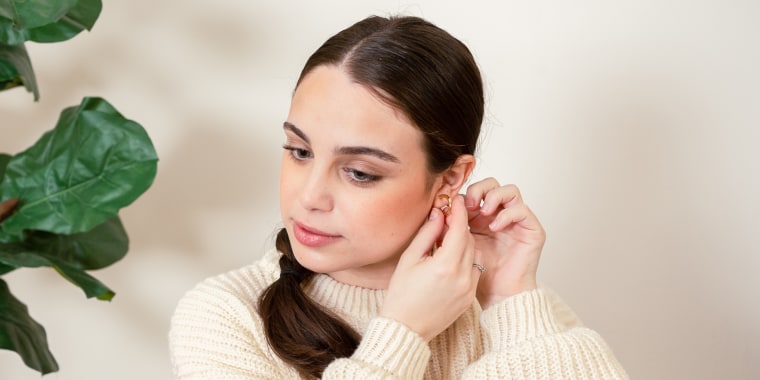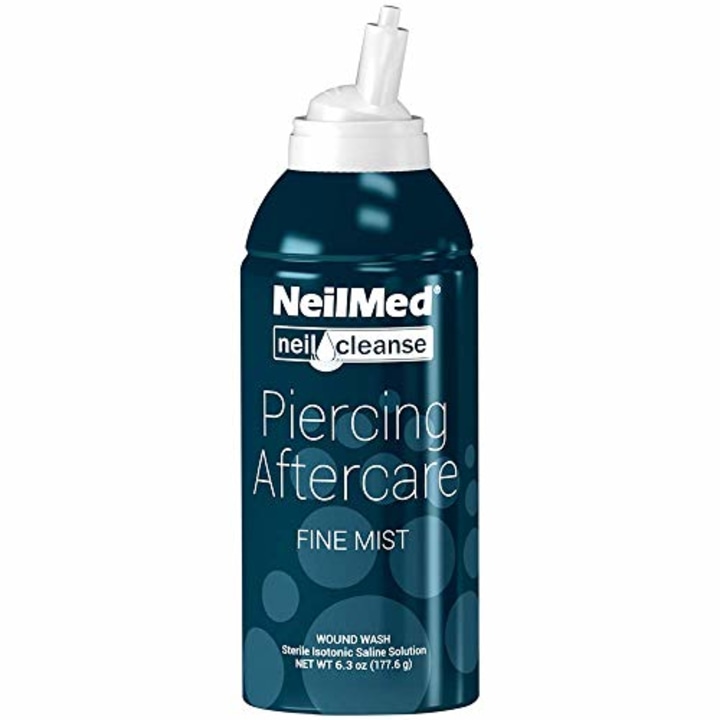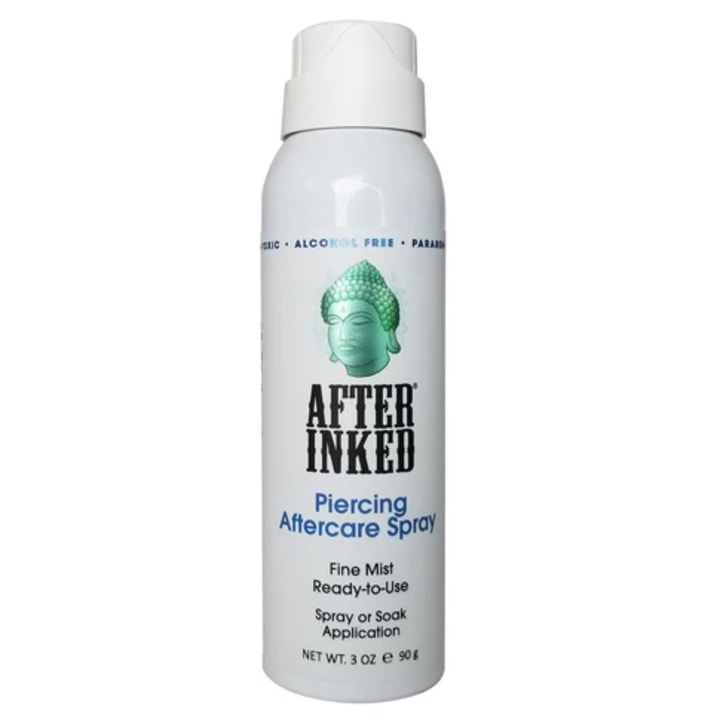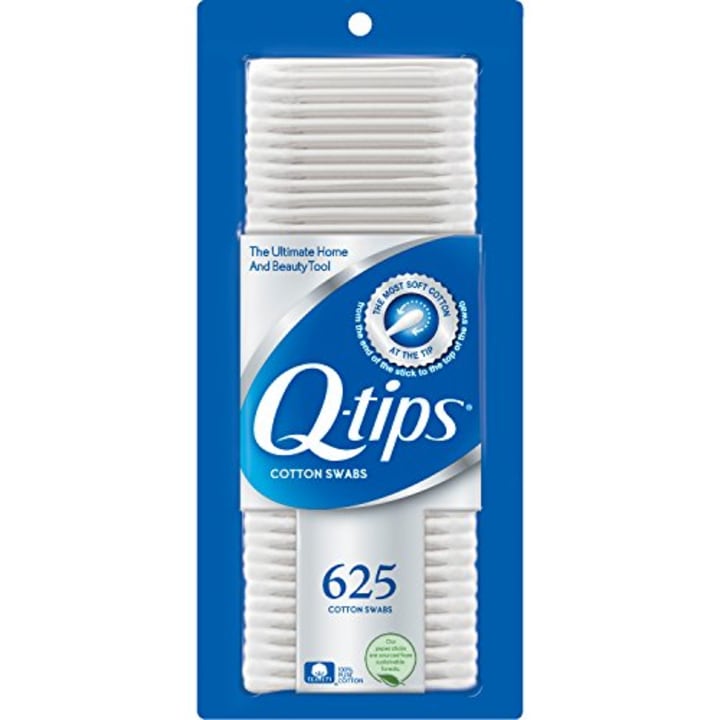With any new piercing, aftercare is key for preventing infection and scarring. According to experts, you don’t need a ton of products to keep your new bling clean and help support healing — in fact, less is more. To help you find the right piercing aftercare products — and steer clear of potentially problematic cleaning solutions which may surprise you — we spoke to two board-certified dermatologists about best practices and products for piercing aftercare.
Here’s everything you need to know to protect your new piercing.
SKIP AHEAD How we picked the best piercing aftercare products | The best products for piercing aftercare in 2024 | How to shop for piercing aftercare products | How to care for a new piercing
How we picked the best piercing aftercare products
The golden rule of piercing aftercare is to keep the piercing clean using sterile, nonirritating products. Unlike products formulated for other skin care concerns, there’s no need to get fancy to get good results — in fact, the simpler your piercing aftercare products, the better. Here’s how the dermatologists we spoke with approached this highly curated list.
- Simplicity: Both dermatologists we spoke with emphasized that a simple saline solution — no additives, no alcohol, and no antibacterial ointments — is the best product for piercing aftercare. You should even avoid basic wound care staples like rubbing alcohol and hydrogen peroxide. Our picks are all pure saline.
- Application: To prevent exposing a fresh piercing to germs, avoid touching it whenever you can — including when you’re cleaning it. The piercing aftercare products included here have spray applicators to make your life easier and cut down on the risk of infection.
- Affordability: Saline solution is saline solution — the only difference in expert-backed piercing aftercare products is the packaging. All of our picks are under $15.
The best piercing aftercare products in 2024
NeilMed Piercing Aftercare Fine Mist
- Travel size and TSA-friendly
- No burning or stinging
- Cap needed to keep sterile
For piercing aftercare, Dr. Kiran Mian, D.O, a board-certified dermatologist at Hudson Dermatology and Laser Surgery in New York City has a clear favorite product in the NeilMed Piercing Aftercare Fine Mist. As any piercing aftercare should be, it’s a pure saline solution free of preservatives and additives. What makes it stand out as Mian’s top pick is the applicator. “It comes in a mist and it has a little bit of pressure to it that helps to get the saline underneath the piercing,” she says. Getting a spray with the right pressure level is important; the fine mist gets the job done without causing irritation, which is something you won’t always find in generic saline sprays from drugstore brands. Plus, it doesn’t require you to use your fingers or a cotton swab, which has the potential to introduce bacteria.
After Inked Piercing Aftercare Spray
- Alcohol-free
- Cruelty-free
- Portable
- Spray covers a wide area
Another solid saline spray recommended by Mian, this piercing aftercare spray is alcohol-free, free of parabens and fragrances, and also cruelty-free. A bonus for body piercings in hard to reach areas: you can spray it from any angle.
Q-tips Cotton Swabs
- Affordable
- Mostly come in large packs
If you are going to opt for a non-spray saline solution (or a generic drugstore wound spray with a more forceful spray) Mian recommends using a regular cotton swab, rather than a cotton ball. “If you use something that’s too fluffy like a cotton ball, you run the risk of getting the fibers caught behind the stopper or the stick and that can sometimes lead to infection,” says Mian. Cotton swabs like Q-tips are also useful for gently removing any built-up crust from a piercing and are more sanitary than using your fingers, she says.
How to shop for piercing aftercare products
Unlike so many skin care issues, shopping for piercing aftercare products doesn’t have to be complicated. The simpler the solution and the fewer products you use, the better, according to our experts. Here’s what to consider:
The simpler, the better
“It’s important to use gentle, nonirritating cleaning products on new piercings to avoid irritation and potential complications,” says Dr. Carmen Castilla, M.D., a board-certified dermatologist at the New York Dermatology Group in Manhattan. Simple saline solution is best and any piercing aftercare product you use should be free of fragrance and alcohol.
Avoid certain ingredients
It may seem smart to reach for antibacterial solutions like hydrogen peroxide or rubbing alcohol to clean a new piercing, but both can actually cause irritation and slow healing, according to our experts. “Both can irritate the skin and dry it out,” says Mian. “Hydrogen peroxide in particular dissolves away healing skin. If you have a scab, for example, it will kind of dissolve that scab away, but when a wound is healing, you want that scab so the new skin is able to heal.”
How to care for a new piercing
There are two main commandments for piercing aftercare: clean it daily and otherwise leave it alone.
“You want to avoid any tugging or pulling — that’s key when it comes to new piercings,” says Mian. If you can, try not to sleep on a new piercing, according to Castilla (i.e. if you have a new ear piercing, try to sleep on your back). “And be mindful of your new piercing while getting dressed — snagging it on clothing can be painful,” she says.
Our experts recommend using a saline spray once a day to adequately clean a piercing without the need to touch it. Non-sprays can work too if paired with a cotton swab with gentle pressure, says Mian. (If you absolutely must touch your piercing with your fingers, make sure to wash your hands first, says Castilla.)
Using a cotton swab can also be helpful if you have drainage or crusting. “If that happens, that’s when you can use a little hydrogen peroxide to kind of dissolve away that crust without having to use too much force,” Mian says.
Technically, you can use good old-fashioned water and soap (though it should be fragrance-free) to clean your piercing. Just make sure to be extremely gentle and, if you’re using your fingers, that you’ve washed them first.
Meet our experts
At NBC Select, we work with experts who have specialized knowledge and authority based on relevant training and/or experience. We also take steps to ensure all expert advice and recommendations are made independently and without undisclosed financial conflicts of interest.
Dr. Kiran Mian, D.O, is a board-certified dermatologist at Hudson Dermatology and Laser Surgery in New York City. She specializes in holistic treatments to target issues relating to hair, skin and nails.
Dr. Carmen Castilla, M.D., is a board-certified dermatologist at the New York Dermatology Group in Manhattan specializing in both medical and cosmetic dermatology.
Why trust NBC Select?
Macaela MacKenzie is a journalist and former Glamour editor who has covered beauty and wellness treatments for over a decade. For this article, MacKenzie spoke to dermatologists about the best approach to piercing aftercare, including their top recommended products, what to avoid, and when to consult a doctor about signs of infection.
Catch up on Select’s in-depth coverage of personal finance, tech and tools, wellness and more, and follow us on Facebook, Instagram and Twitter to stay up to date.








